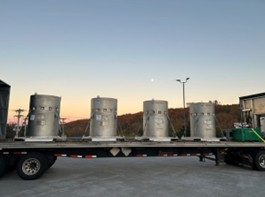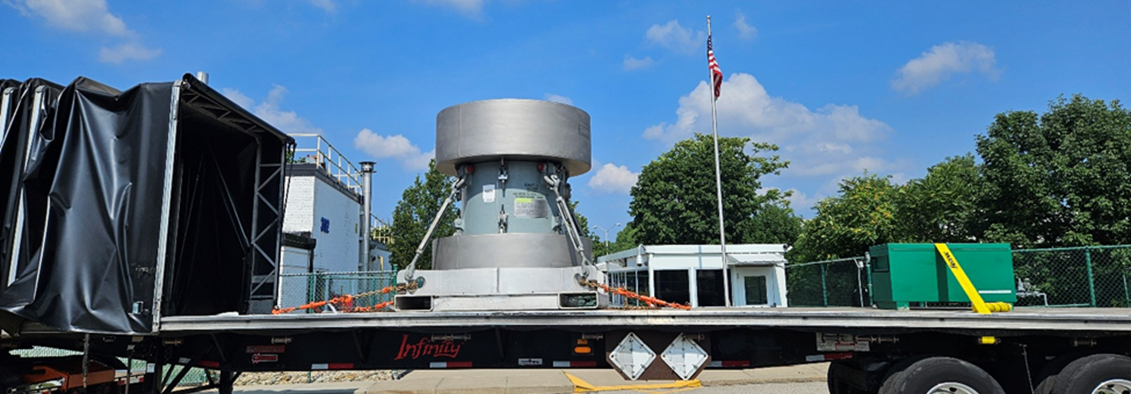Dry Transfer Systems

Innovating the Movement of Spent Nuclear Fuel
For more than 15 years, NAC has designed, fabricated, tested and operated a variety of Dry Transfer Systems (DTS) to transfer spent nuclear fuel into shipping casks from facilities with limited crane capabilities.Operated in diverse environments in the U.S. and internationally, Dry Transfer Systems have proven to be a significant enhancement in the transfer of fuel to and from spent fuel pools, dry storage and hot cell facilities, and spent fuel transport casks.
NAC has successfully and safely transferred more than 4,000 fuel assemblies using Dry Transfer Systems.NAC’s latest generation DTS incorporates years of extensive design and operating experience. It consists of a transfer cask with integrated fuel canister grapple, fuel canisters, facility and cask adapters, and other related tools and equipment.
The transfer cask is used to move irradiated low enriched uranium (LEU) and highly enriched uranium (HEU) materials test reactor (MTR) fuel on-site in cases where dimensional, weight or other restrictions prohibit direct loading or unloading of the shipping cask.
NAC’s Dry Transfer Systems are designed to reduce costly and time-consuming decontamination efforts.The transfer cask is used to move canisters of fuel from the fuel storage location to the shipping cask. Adapters ensure proper interfacing of the transfer cask with fuel storage locations and NAC shipping casks. NAC can easily develop site or equipment-specific adapters to allow interfacing with virtually any storage facility.
When using a DTS loading approach, NAC first prepares the shipping cask for receiving fuel canisters by dry transfer. The fuel canisters are then loaded with fuel and retracted into the transfer cask, which is then moved to the shipping cask. The loaded transfer cask is then used to transfer the fuel canister into the shipping cask.
DTS equipment has been used with research reactor and MTR fuel assemblies at facilities in Chile, Colombia, Greece, Iraq and Taiwan, as well as several research reactor sites in North America. Through these operations, which have included direct cask-to-cask outdoor transfer, NAC has standardized the canister handling equipment and transfer system. The entire process has proven straightforward, offering direct solutions to facility interface problems.



